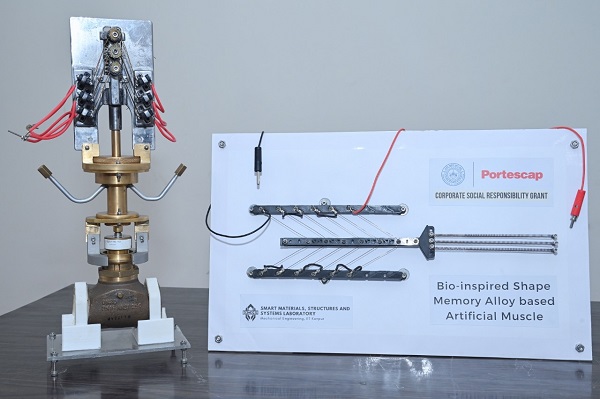Kanpur, (Asian independent) Researchers at the Indian Institute of Technology (IIT) Kanpur on Tuesday announced the development of a bio-inspired artificial muscle for next-generation space robots and medical prostheses.
Encouraged by the industry demand and growth in the field of miniature, light weight, non-magnetic gear-free actuators, shape memory alloy (SMA) based actuators have emerged with an excellent power-to-weight ratio as a suitable alternative to the conventional actuators.
However, existing SMA actuators have limited scope in terms of higher force or torque output due to the relatively simple architecture of the actuation mechanism.
To address this limitation, the team from Smart Materials, Structures and Systems (SMSS) Lab at IIT Kanpur expanded the design space of the SMA actuator by leveraging the characteristics of bi-pennate muscle architecture with about 70 per cent enhanced muscle force output per unit weight.
This will result in the creation of a new class of space robots which will reinforce Indian space technology, the team wrote in the paper published in Nature Scientific Reports.
“This invention will not only result in the development of next-gen space robots and medical prostheses, but will also help aviation and some other industries. In a way, it will help make multiple sectors self-reliant and more advanced in the long run,” said Prof. Abhay Karandikar, Director at IIT Kanpur in a statement.
The primary goal of an actuator is to generate mechanical output, such as force and displacement, by transforming electrical energy. SMAs are a class of smart materials that can restore their shape after being exposed to high temperatures.
The interesting property of the customisable multi-stage hierarchy of the SMA-based bio-inspired muscle design will also encourage researchers in the domain of bio-mechatronics to develop adaptive robotic prostheses for bio-medical application in the country.
This will significantly reduce (one third of the current cost) the cost of bio-medical devices and increase the affordability of high performance systems like MRI scanner, CT scanner and surgical robots. The technology will also enable development of patient rooms with low maintenance and quieter operation.








